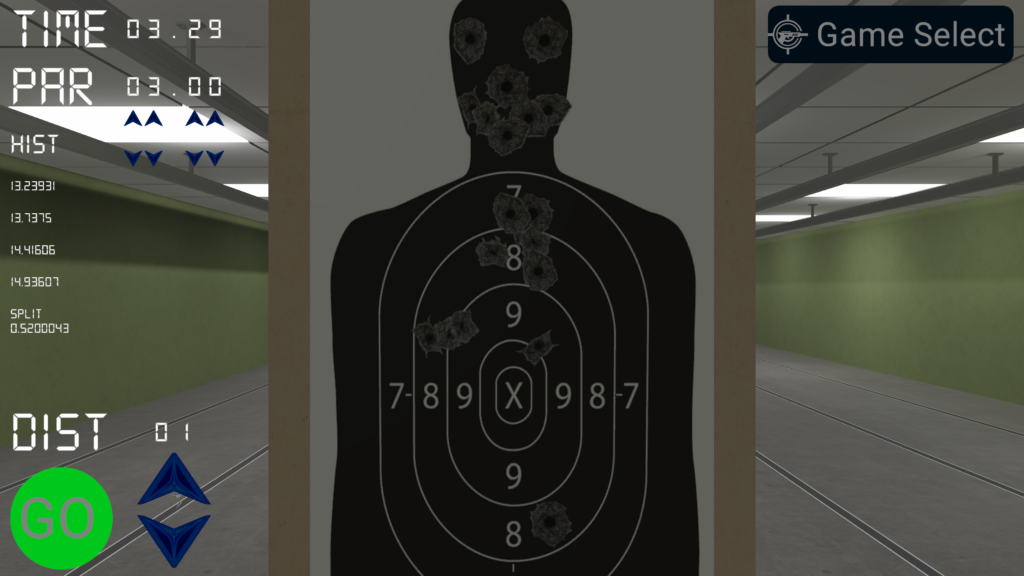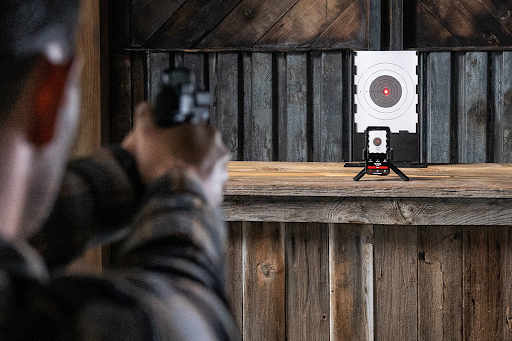From my dozens of paid shooting classes I’ve distilled some shooting range drills you can do at the indoor range into a handy list you can take with you. Combine with the outdoor range drills for a comprehensive list.
Indoor shooting range drills list
- Pistol accuracy at different ranges + clear checkpoints
- Rifle accuracy at different ranges + clear checkpoints
- Pistol concealed draw for speed at 5, 10, 15 yards + clear checkpoints
- Pistol concealed draw for speed at 5, 10, 15 yards + clear checkpoints
- Pistol Circles on grid transition drill at close range
- Pistol double tap from body to head at different ranges + clear checkpoints
- Rifle double tap from body to head at different ranges + clear checkpoints
- Pistol combat reload stationary
- Rifle combat reload stationary
- Pistol Circles on grid transition drill at close range with dummy round misfires and reload
- Rifle empty transition to pistol + clear checkpoints
- Pistol concealed draw at close range for consistency
- Pistol concealed draw at close range while stepping backwards and offcenter
- Pistol left handed concealed draw and fire multiple shots
- Pistol right handed concealed draw and fire multiple shots
Outdoor Shooting Range Drills Explanations
Clear Checkpoints
In a stressful situation we get tunnel vision. This is an instinctive response to help you focus on that bear trying to eat you. But in a gunfight tunnel vision is counterproductive. To fix this, once your target is neutralized, do not holster your weapon. First, look fully left, then look fully right. If no additional targets, and your prior target remains neutralized, reload, then holster your weapon. This ensures there are no additional targets you did not see. It also helps you clear your tunnel vision.
Accuracy at Different Ranges
How much time you take to aim should depend on how far away the target is. At 3-5 yards, where most shootings occur, you don’t really need to aim at all. This can shave a second off your firing time. At 20 yards you really need to aim, as you are liable for every bullet. Practicing at different ranges deliberately, by moving the target every round of fire, helps you develop this skill.
Triple Tap / Transition from Body to Head
Unlike the movies, just shooting someone does not typically immediately take them out of the fight. Even if you shoot them in the heart, all that does is stop circulation and it would still take about 10 seconds for them to lose consciousness. The body is actually pretty good at stopping bleeding in the short-term, where even someone with their arm cut off won’t immediately bleed due to constriction of the blood vessels. So plan on shooting until you hit the spine, center of the brain, or until your target submits. This may include one or more reloads and jam clears. You practice those too, right?
Off-Hand or One Handed Draw/Shooting
Shooting a pistol using one hand is essentially the same as with two hands. Ensure your off-hand is in a safe location, such as the palm of your hand on your chest.
To perform a one-handed draw, move your garments using your firing hand by using a sweeping, circular motion. I use my thumb under my garments for this. While controlling my garments with my thumb, I then proceed to do a one handed draw normally. If I do not have a round in the chamber, I rack the slide by pressing my red dot sight on the top of my gun belt, being careful not to point the weapon at my leg or feet while doing so.
A more dangerous but realistic variation is using your offhand to keep your assailant away from you while performing a one-handed draw. To do so, press your off-hand forearm pressed against the neck of your assailant, who is pressing in at you at the same time. Don’t just push into the neck, also push upwards under the chin (learned from BJJ). Assuming your assailant is a paper target, use a one-handed draw to fire at close range. If your assailant is a real human, triple check your weapon is actually empty before doing this drill, have your partner check your weapon to verify, and ask their permission before practicing this.
Cicles on grid transition
On the back of a paper target, use a marker and draw a grid of circles, about 3 inches wide. The size isn’t too important, but if you draw a grid 3×4 you’ll have 12 circles. From concealed carry, start your shot timer. At the beep, shoot each circle in order as quickly as possible. The trick I’ve learned from speed/competition training is to quickly is to fire, before your recoil ends move your eyes to the next target, then move your aim to the next target. You’ll find that your aim will move to your eyes and not past. If you do it in reverse order you’ll often overshoot your target and have to adjust.
Dummy rounds / misfires
It’s important to practice clearing jams, so that it becomes automatic.
I have a bag of dummy rounds which I mix in with real rounds. I purposely do not pay attention to where I insert the dummy rounds into the magazine, and also shuffle my magazines afterwards.
If you have a partner and a rifle, your partner can use a stick to jam the exhaust port of your gun by stopping the ejection of the spent casing.
To clear a jam, use “Tap rack slide” or sometimes called “Tap rack bang”. First, use the palm of your other hand to hit the bottom of your magazine. Next, rerack the slide. Lastly, attempt to fire. If in a dangerous situation, keep your eyes on your target the entire time you do this, with your weapon pointed at the target. If it doesn’t work, or if you can see an obvious or dangerous jam, change to another weapon.
Firing while stepping backwards and off-center
In a real life encounter you want to get out of the line of fire of your opponent. With tunnel vision, your opponent may not even see you after you do this. In addition, if a target is charging at you this will often avoid the charge while not significantly decreasing accuracy.
Start with your pistol in concealment while standing in a neutral position. You may wish to have your hands up, or other similar displays of deescalation you would actually do in real life. On the beep, at the same time you concealed draw, step back to your shooting stance wider with your rear leg wider than you normally would. Follow up with your front leg, such that you are essentially sidestepping. Try to do this without slowing down your concealed carry shot times. If you have not done it before, I recommend starting with dry fire for safety.
Interactive Gun Range for indoor range drills
Using Interactive Gun Range, you can get all the benefits of the indoor range except recoil (and using CoolFire Trainer you can even get that). Plus there are no ammo costs, no smell or noise. It’s essentially free beyond the initial setup.



